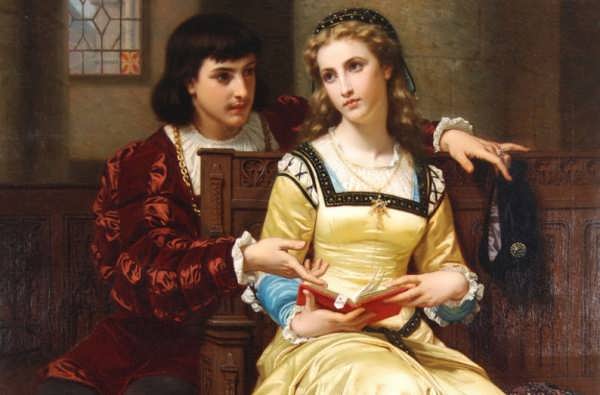The story of Romeo and Juliet is known worldwide. When the famous playwright William Shakespeare wrote this brilliant tragedy, he probably didn’t realize how popular it would become. Musicals, plays, films, and operas have all been created based on it… The tragic love story of two young people from feuding families leaves no one indifferent.
Facts About “Romeo and Juliet”
- Origin of the Story: The idea for “Romeo and Juliet” did not originally come from Shakespeare. He based it on a widely known story by Luigi da Porto, who himself borrowed it from ancient authors.
- First Russian Translation: The play was first translated into Russian in the 19th century, although Shakespeare wrote it in the late 16th century.
- Original Title: When the play was first published, it had a much more descriptive title: “The Most Excellent and Lamentable Tragedy of Romeo and Juliet.”
- Inspiration from Earlier Works: Before Shakespeare’s play, there were already several legends and novellas about the love between members of rival families. Shakespeare’s tragedy was based on three such novellas, the earliest of which was written in 1562 by Arthur Brooke, titled “The Tragicall Historye of Romeus and Juliet.”
- Spoiler in the Prologue: “Romeo and Juliet” begins with a prologue that tells the audience what will happen in the play, so the ending was no surprise to anyone.
- Verona and the Story: Shakespeare immortalized the Italian city of Verona with the greatest love drama of all time. The names Romeo and Juliet are inseparably linked to this city. In 1907, the House of Juliet appeared in Verona on Via Cappello, house number 23.
- First Film Adaptation: The tragedy “Romeo and Juliet” was first adapted for film in 1900.
- Over 100 Film Adaptations: There are over 100 film adaptations of this famous play. Films based on it have been made in dozens of countries, including the USA, Canada, France, Italy, Uzbekistan, the Philippines, Croatia, Argentina, and many others.
- The Balcony Scene: Juliet’s balcony is a crucial element in any production or film about the legendary lovers. Without this detail, the content of Shakespeare’s play is unthinkable, and it has become a globally recognized visual symbol of romantic declarations. However, the balcony was only mentioned in 1524 in a story by the Italian author Luigi Da Porto. In Shakespeare’s original version, there was no balcony; Romeo simply listened to Juliet from her window.
- Juliet and Romeo: In Italy, when referring to Shakespeare’s play and its characters, it’s customary to mention Juliet’s name first, followed by Romeo’s – Juliet and Romeo. In the Russian language, the names are usually presented in reverse order.
- Romeo’s House: In Verona, there is a preserved 14th-century mansion known as “Romeo’s House,” which is often a stop for tourists.
- Musical Adaptations: This famous play has been adapted into music by many renowned composers, including Tchaikovsky and Prokofiev.
- Psychological Phenomenon: The psychological phenomenon where romantic attraction increases due to obstacles in a relationship is known as the “Romeo and Juliet effect.”
- Happy Ending Adaptation: In a version of “Romeo and Juliet” by the famous Spanish writer Lope de Vega, the story ends happily rather than tragically.
- Timeline of the Romance: From their first meeting to their wedding, Romeo and Juliet knew each other for less than 24 hours.
- Age of the Characters: In Shakespeare’s original play, Juliet was only 13 years old, while Romeo was 21 years old.
- First Female Juliet: In 1662, actress Mary Saunderson took the stage as Juliet, becoming the first woman to play this iconic role. Before this, all roles in theater, including female ones, were performed by men.
- Romeo as a Term: In many languages and cultures, the name “Romeo” has become synonymous with a hopelessly romantic man.
